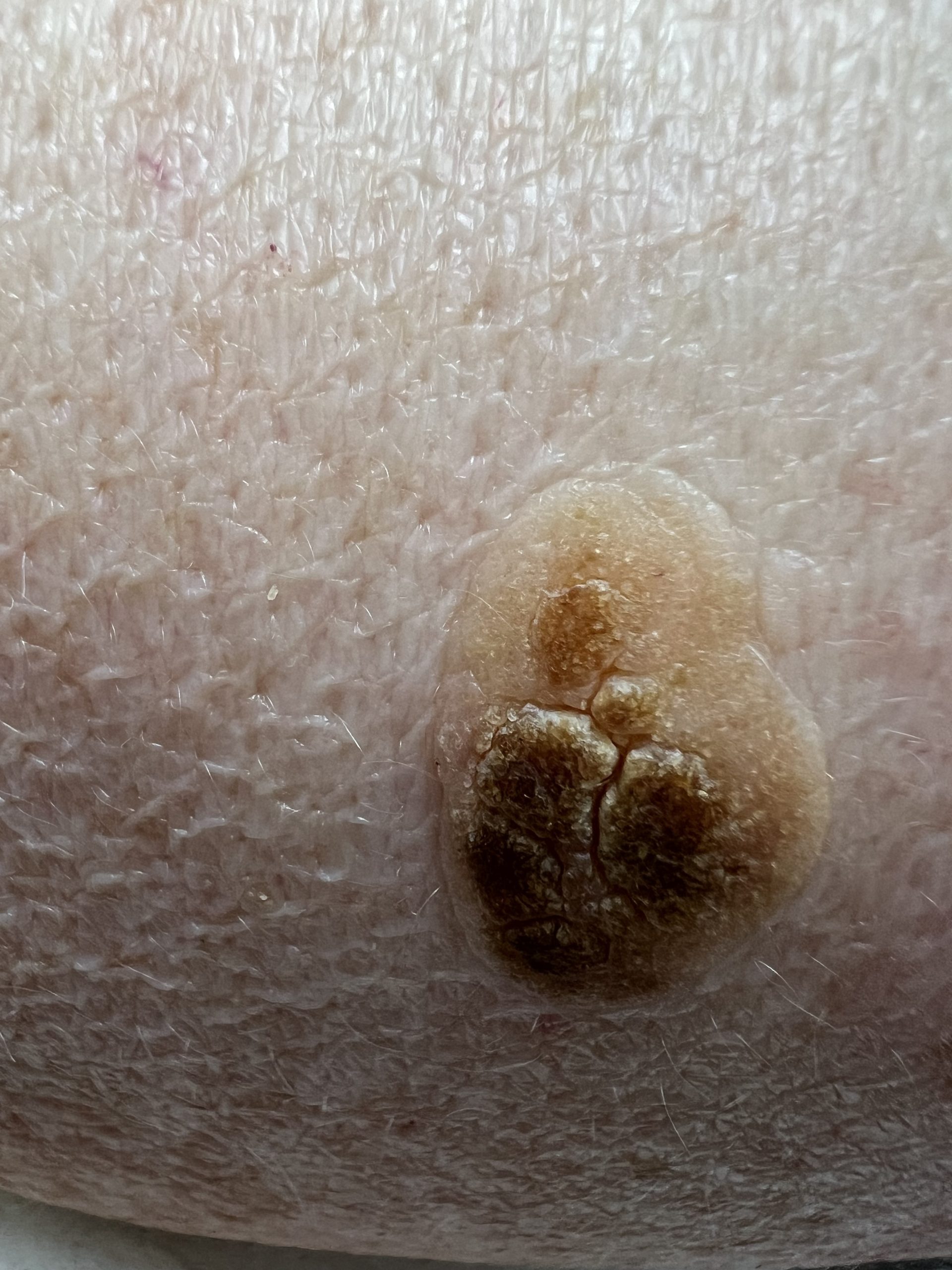In this blog, I will look at Seborrheic keratosis and the comparison of two that look very different. Seborrheic Keratosis might sound like a mouthful, but it’s actually one of the most common—and completely harmless—skin growths we see. These little (or sometimes not-so-little) patches can show up anywhere on the body and often come as a surprise, especially if you’ve never had one before. The good news? They’re benign, non-cancerous, and very normal, especially as we age.
What makes seborrheic keratoses interesting is just how differently they can present. Some are soft, fibrous, and waxy, almost like they’ve been gently pasted onto the skin. Others are dry, crusty, or look a bit scaly and stuck-on. I often get questions from clients who are concerned about how strange or sudden their appearance might be—but rest assured, they’re nothing to be alarmed about.
So why do we get them? The exact cause isn’t fully understood, but genetics and age play a big role. You’ll often start noticing them in middle age, and they tend to become more common over time. They’re not caused by infection, sun exposure, or anything you’ve done “wrong”—they’re just part of how our skin changes.
I always tell my clients that while they can look a bit odd or feel annoying, especially in areas where they rub on clothing, seborrheic keratoses are completely harmless. Of course, if anything ever changes rapidly in size, shape, or color, it’s a good idea to get it checked—but otherwise, there’s no reason to worry.
In my next post, I’ll show a side-by-side comparison of two different types: one very fibrous and waxy, the other more crusty and dry. It’s a great way to see just how varied these growths can be—and how “normal” comes in many forms.


To book a consultation in my Colchester or Chelmsford Clinic Click HERE

